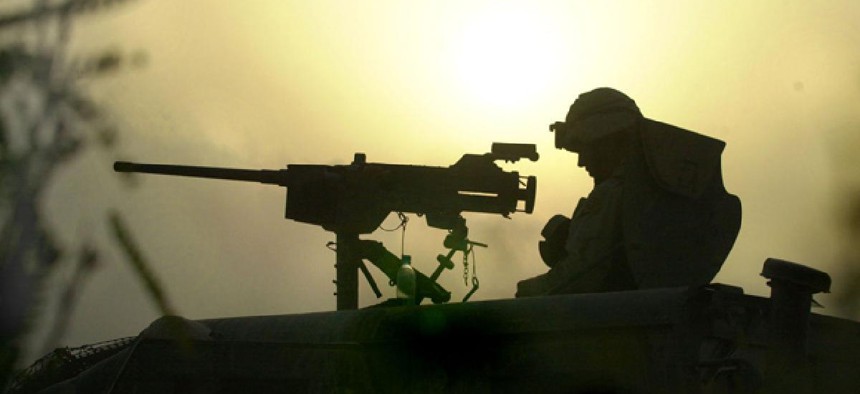VA Gives Tranquilizers to 30 Percent of PTSD Patients, Despite Warnings

Wally Santana/AP File Photo
Benzodiazepines can increase rather than reduce fear, worsening recovery.
The Veterans Affairs Department treats more than 30 percent of veterans diagnosed with post-traumatic stress disorder with tranquilizers such as Xanax and Valium, despite clinical practice guidelines issued in 2010 warning against their use, VA’s National Center for PTSD reported .
The 2010 PTSD clinical practice guidelines, which also apply to the Defense Department, cautioned providers against using benzodiazepines to manage PTSD due to “the lack of efficacy data and growing evidence for the potential risk of harm,” the PTSD center said in in the March edition of its research quarterly publication.
Research shows that treatment of PTSD with benzodiazepine drugs “may interfere with the extinction of fear conditioning or potentiate the acquisition of fear responses, actually worsening recovery from trauma,” the center reported. This, in turn, may interfere with “first line” treatment such as exposure therapy , in which a trained therapist helps a veteran relive traumatic events.
More than 50 percent of combat veterans diagnosed with PTSD also suffer from alcoholism or substance abuse, and treatment with benzodiazepines can lead to addiction, the center said.

Broken Warriors
is an ongoing series on mental health issues in the military.
The number of veterans with PTSD treated by VA nearly tripled from 171,000 in 1999 to 498,000 in 2009, as troops who served in Afghanistan and Iraq entered the VA health care system. At the same time, benzodiazepine prescriptions for veterans with PTSD dropped from 37 percent in 1999 to 30 percent in 2009, as the VA started to use selective serotonin re-uptake inhibitors such as Zoloft and Paxil for PTSD treatment.
Despite this reduction, the VA told Nextgov last May that it had purchased $72 million worth of benzodiazepines from Oct. 1, 2001 through March 31, 2012.
The PTSD center urged VA to continue to cut back on the use of benzodiazepines for treatment of PTSD. “The decrease in benzodiazepine prescribing to 30 percent is encouraging yet the frequency of use remains high and suggests that minimizing benzodiazepine exposure is a vital policy issue for the VA,” the report said.
This fits in with a policy from the Army Surgeon General last April that warned regional medical commanders against the use of benzodiazepines to treat PTSD. The Army determined, like VA this month, that treatment of PTSD with benzodiazepines could intensify rather than reduce combat stress symptoms and lead to addiction.
In September 2011, the Defense Centers of Excellence for Psychological Health and Traumatic Brain Injury almost shouted its warning against benzodiazepines, emphasizing the guidance in bold-face type on its website: “ There is evidence against the use of benzodiazepines in PTSD management as it may cause HARM. Strongly recommend against the use of benzodiazepines for treatment of PTSD. ”
The PTSD center concluded its report on benzodiazepines by urging VA to find alternatives for PTSD treatment, noting that “mounting evidence suggests that the long-term harms imposed by benzodiazepine use outweigh any short-term symptomatic benefits in patients with PTSD.”
NEXT STORY: China, East Asia Most Vulnerable to a Superflu






